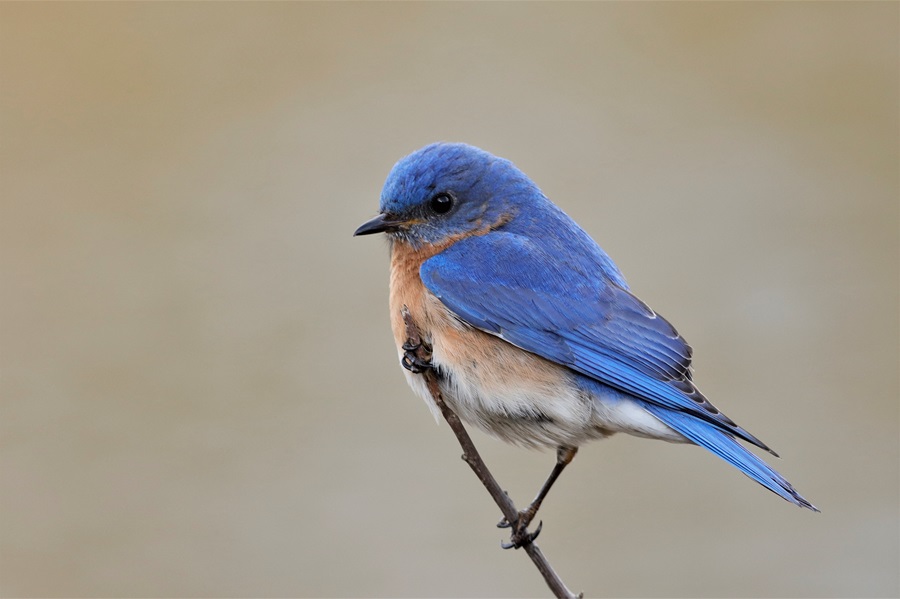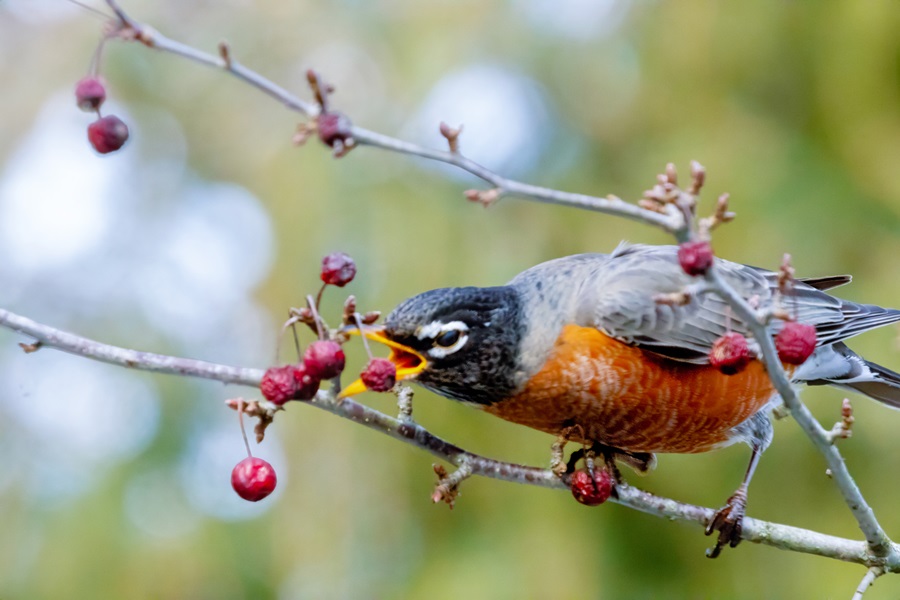No matter the season, people are always asking me about eastern bluebirds. Musicians and poets want to write about them. There’s no question that whatever our fondness for birds may be, these birds manage to hold a special place in everyone’s heart — surely for the vivid and breathtaking color of their plumage.

It probably isn’t for this bird’s song. My friend Vernon Laux used to say that a bluebird’s call sounds like a camera’s motor drive: chuury, chuury, chuury — just like that. But if you want to know if there are eastern bluebirds in your neighborhood, it’s advisable to get to know their distinctive vocalizations. Listen, and once you learn their calls, you’ll realize that bluebirds are a year-round local species.
The eastern bluebird is a thrush — one of three of this species that nest in the Cape Cod woodlands.
The one that is often heard, but harder to see than the bluebird, is the appropriately named hermit thrush. Its song, like a high-pitched flute, can be heard ringing through the woodlands in the early morning.

Our most frequently observed thrush, ubiquitous in its distribution, is the misnamed American robin. This robust and hearty thrush sings a crepuscular song; it’s the first to sing at daybreak and often the last heard before nightfall.
I have always thought that a more appropriate name for this bird would be the black-headed thrush. It’s likely it was named by early European colonists for its red breast, similar to that of the European robin. But this is a big North American thrush with a black head. Say it next time you see one, and I think you’ll find that the name works.

Back to our smallest thrush, the eastern bluebird. It can be found on the Cape throughout the year, visiting feeders in winter and nesting in summer. It’s hard to tell whether the bluebirds you’re seeing are year-round residents or migrants. That’s because our maritime climate satisfies the needs of eastern bluebirds as it does for several other species of birds that might otherwise head farther south but can tolerate the relatively mild Cape Cod winters.
The question I’m most frequently asked about bluebirds, of course, is how to attract them. The answer depends on what time of year we’re talking about. The absolute best way to invite them into your yard during the cooler months, especially in winter, is to put out feeders that have dried mealworms in them. You’ll certainly get a response from any local bluebirds that are around; just keep in mind that mealworms attract everybody — well, every bird, not just bluebirds.

During the nesting season, bluebirds are attracted to nesting boxes, which simulate the hollow trees that they prefer. I have found after decades of monitoring bluebirds in nest boxes that an east-facing box, placed on a pole at eye level in an open area 20 to 50 feet from sheltering trees, often gets a positive response.
Here on the Cape, eastern bluebirds like open meadows, cranberry bogs, and open yards with trees to perch in before flying a short distance to the nest. The reason for putting the box at eye level is so that you can monitor for eggs and young during the nesting season and clean out the box in early winter.
Bluebirds nest early, having a complete clutch laid by mid-April. The female builds the nest, both parents incubate, and both parents feed the young.

While human beings often try to control nature, most wild animals are unpredictable. What I’m getting at is this: one can never tell if bluebirds will use your nest box or not, no matter what the placement or habitat. It might sit empty. Or others — black-capped chickadees, tufted titmice, or downy woodpeckers — might move in.
Once you set up a box, it’s imperative that you responsibly maintain and monitor activity around it. At no time should you allow the introduced and invasive house sparrow to nest in your bluebird box. In some cases, they’ll build a nest on top of an existing bluebird nest containing eggs or young. Don’t allow that, either. This Asian weaverbird, not a sparrow at all, is detrimental to our native cavity nesting birds, aggressively driving them out.
Now, go on, put up a nest box. You will likely be rewarded.
